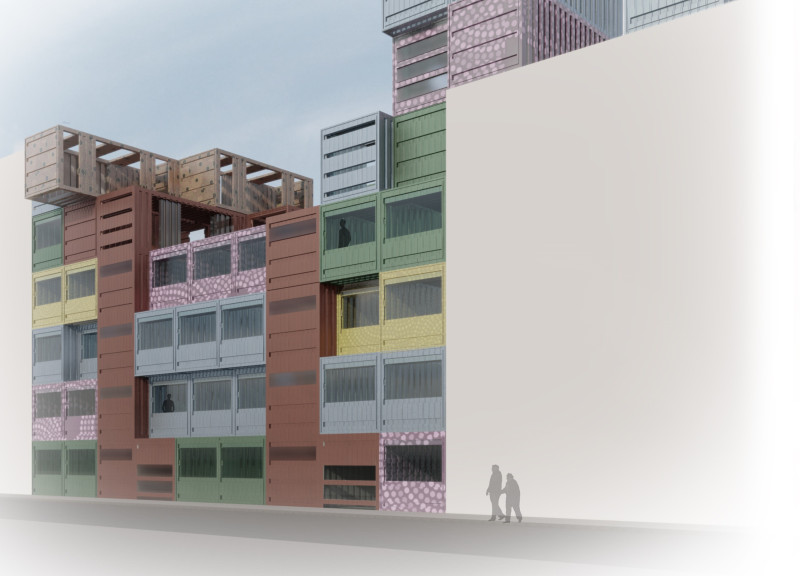5 key facts about this project
The Container Puzzle project addresses the need for affordable housing in Melbourne by utilizing shipping containers as a central part of its design. Located in an urban setting, it not only fulfills the need for shelter but also encourages community connections among residents. This project features flexible and modular units that can be configured in various ways to accommodate different household sizes, reflecting the changing requirements of modern living.
Community Integration
The design focuses on the value of shared spaces, incorporating areas known as 'socializers' that promote interaction among neighbors. These communal spaces are integral to fostering a sense of belonging in a diverse environment. By encouraging relationships between residents, the project aims to build a strong community, which is essential for its success.
Cultural Context
The architecture incorporates elements of local Aboriginal art, respecting the cultural heritage of the region. This integration not only acknowledges the traditions of the area but also enhances the living experience for residents, allowing them to connect more deeply with their surroundings. This thoughtful consideration of cultural context encourages personal expression and engagement with local identity, adding significance to the design.
Sustainability Initiatives
Sustainability is woven into the project’s framework, with plans for urban farming as a key feature. Certain containers will be used for community gardening, enabling residents to grow food locally while reducing their expenses. Additional components, such as systems for rainwater collection and the possibility of solar energy, emphasize the commitment to environmental responsibility, supporting a sustainable lifestyle for inhabitants.
The choice to utilize used shipping containers, along with insulation, flooring, and doors and hardware, reflects a practical approach that aims to be both cost-effective and efficient in construction. Each unit is designed with adaptability in mind, ready to change as residents’ needs evolve. This approach not only provides necessary housing but also enhances daily life through thoughtful design that prioritizes community and sustainability.



















































